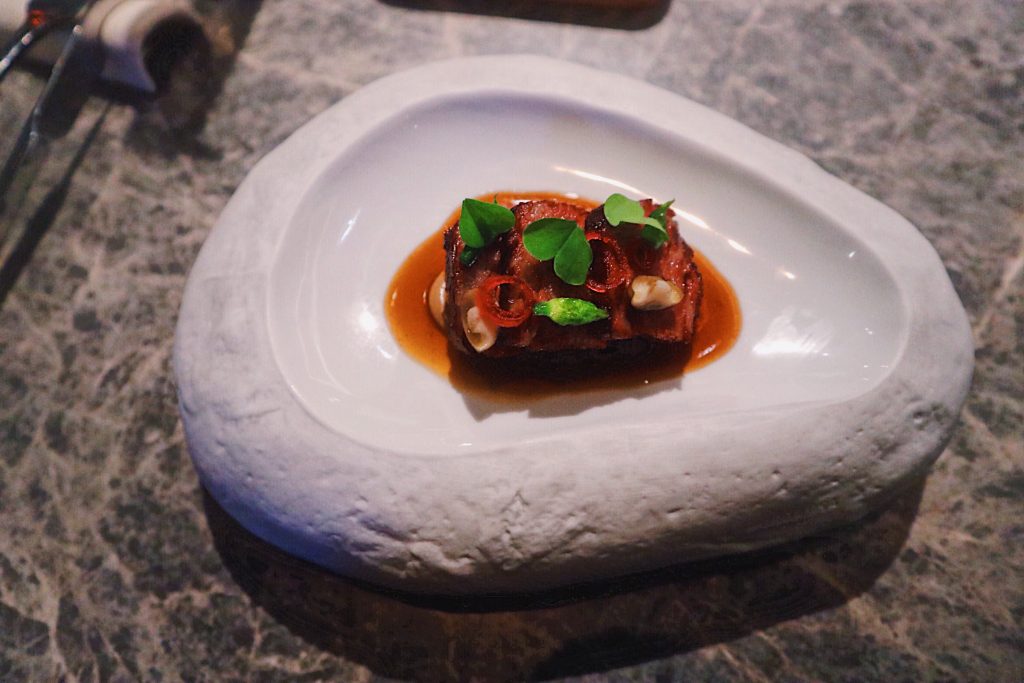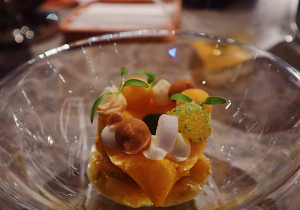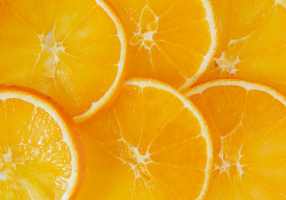Traditional vs. Modernist: The Past and Future of Cooking Collide
Yo foodies! Have you heard about this modernist cuisine thing that’s got some chefs and home cooks all riled up? It’s a totally different style of cooking that uses science and technology to do some crazy stuff with food. We’re talking things like sous vide cooking, turning liquids into foams and gels, and even using centrifuges. Wild, right?
For centuries, food traditions have been passed down from generation to generation, defining regional and cultural identities. Each cuisine has its time-tested cooking methods, signature ingredients, and iconic dishes. We’re talking about your classic Italian pastas, Indian curries, and Southern American comfort foods.
But in recent decades, some chefs have challenged culinary tradition by adopting a more experimental, innovative approach. Dubbed “modernist cuisine”, this style applies scientific principles and novel cooking techniques to create utterly unique textures, flavors, and presentations. We’re not just talking adding a sprig of parsley to your plate. Think translucent ravioli made with meat glue, olive oil foams frothed with lecithin, and sous vide cooked steak finished with a quick blow torch sear.
While traditional cuisine honors historic cooking wisdom, modernist chefs ask: why be bound by tradition? They disrupt conventions in pursuit of new taste sensations and visual spectacle. Their unconventional creations have sparked plenty of controversy. Is modernist cuisine a true advancement for the art of cooking? Or an overly intellectual distraction from the core joy of food?
In this article, we’ll unpack what defines modernist cuisine, how it diverges from more traditional cooking methods, its quirky techniques and “mad science” tools, the pros and cons of this avant garde approach, and whether home cooks can go modernist in their own kitchens. Grab your molecular gastronomy safety goggles – it’s time to get geeky with the science of cooking!
What is Modernist Cuisine?
So what makes modernist cuisine different from all other types of cooking? In two words: science and innovation.
Modernist cuisine aims to understand every chemical and physical reaction that happens when you cook food. Things like how heat transfers, how meat changes at the molecular level during cooking, and how flavors blend and interact.
By using science to understand the processes behind cooking, modernist chefs try to manipulate and control these reactions to create totally new textures, temperatures, and taste sensations in food. Crazy cool, but also a little weird and whimsical!
The term “modernist cuisine†was popularized by Nathan Myhrvold and his 2011 cookbook Modernist Cuisine: The Art and Science of Cooking. This cookbook set out to scientifically analyze traditional cooking techniques and also pioneered new hyper-modern cooking methods.
Modernist Cooking Techniques
So what kind of wacky techniques set modernist cuisine apart from how your grandma used to cook? Here are some of the most popular:
Sous vide: This technique uses precision temperature-controlled water baths to cook food in vacuum sealed bags. It allows chefs to achieve the perfect doneness for meats and other foods. No more over or undercooked steaks!
Foams: Ever wonder how chefs make light and airy foams from liquids like juices, teas, or creme anglaise? The secret is adding soy lecithin and then using an immersion blender to whip air into the liquid. Sciency!
Spherification: This modernist technique uses chemicals like sodium alginate to turn liquid mixtures into delicate, round spheres that burst in your mouth. Think spherical boba tea balls or caviar-like juice pearls on desserts. Fancy pants!
Liquid nitrogen: Ultra-freezing ingredients like ice cream bases with liquid nitrogen at -321°F to create unique frozen textures and smoke effects. Allows making frozen desserts like ice cream instantly at the table.
Deconstructed dishes: Separating elements of a traditionally composed dish and presenting each component individually in unconventional ways on the plate. Challenges perceptions of what certain foods should look like.
Pickling/curing with Pectinex: Using enzymes like pectinases to pickle and cure meats, fruits, and vegetables rapidly. Triples speed of the preservation process.
Centrifuges: High speed centrifugal force can separate liquids and solids, allowing chefs to create concentrated juices, sauces, and extracts with intensified flavors. Mad scientist status.
Freeze drying: Dehydrating foods like fruits, veggies, and meats at sub-zero temps creates super light, crispy textures. Astronaut ice cream gets a gourmet glow up!
Meat glue: Yup, powdered enzymes called transglutaminase are the secret behind fusing proteins together to create seamless cuts of meat. Ever had a burger with a shrimp tail sticking out of it? Meat glue magic.
Powdered foods: Modern technology like spray dryers let chefs turn foods into fine powders for unconventional textured dishes. From powdered guacamole to powdered cheese, modernists love getting their dust on!
Molecular gastronomy: This one is more a style of cuisine focused on the chemistry and science behind cooking. Chefs transform foods at the molecular level with additives like liquid nitrogen to create totally unique forms, textures, and flavors. Think exploding palate popping boba balls!
Traditional Cooking vs. Modernist Cuisine
So how does modernist cuisine compare to more traditional cooking techniques? Here are some key differences:
Cooking goals
Traditional cooking aims for great taste first and foremost. Modernist cuisine pursues technical precision and novelty in addition to flavor.
Tools used
Traditional cooking relies on standard tools – knives, pots, pans, grinders, etc. Modernist cooking uses high tech tools like immersion circulators, centrifuges, dehydrators, and more.
Ingredients used
Traditional cuisine focuses on natural, whole food ingredients you’d find in a basic grocery store. Modernist chefs use specialized additives like hydrocolloids, emulsifiers, and enzymes to alter textures and bind ingredients.
Techniques used
Traditional techniques include roasting, braising, grilling, saut̩ing, baking Рyou know, basic methods passed down through generations. Modernist techniques like low temp sous vide and spherification are radically advanced and new.
Role of science
Traditional cooking relies on learned skills, intuition, and trial/error. Modernist cuisine uses scientific analysis to understand exactly how and why cooking techniques work.
Focus on presentation
Traditional cuisine focuses on flavor as the star. Plating is an afterthought. With modernist food, creative visual presentation takes center stage.
Diner experience
Traditional dishes provide comfort, nostalgia, and familiarity. Modernist cuisine offers novelty, surprise, even confusion or unease for diners not used to deconstructed bites.
Seasonality and locality
Traditional cuisines are deeply rooted in local agriculture and seasonal produce. Ingredients are sourced regionally when ripe. Dishes change throughout the year based on what’s freshly harvested. Modernist cuisines rely more on year-round global imports and industrial farming. Seasonality matters less.
Communal vs individualistic
Preparing and sharing traditional cuisine has cultural rituals, traditions, and communal meaning. Specific dishes mark holidays and family events. Modernist cuisine focuses more on individual diner reactions vs. shared heritage. Dining is intellectualized.
Process vs product
In traditional cooking, bringing ingredients from farm or market to table is valued. With modernist fare, unconventional finished product takes precedence over process. Traditional methods are not sacred.
Simplicity vs complexity
Traditional cuisines tend to use minimal ingredients handled simply to let flavors speak for themselves. Modernist cuisine often layers many intricate components and techniques for novelty.
Familiarity vs novelty
Traditional dishes provide a comfort zone of familiar flavors, nostalgia, and shared identity. Modernist cuisine promises novelty, unexpected flavors, even discomfort or confusion for diners experiencing new techniques.
Food forms
In traditional cooking, foods keep their familiar and expected shapes – a steak looks like a steak, tomatoes look like tomatoes. Modernist chefs transform foods into new shapes, textures, temperatures that defy expectations.
Examples of Traditional Dishes
- Coq au vin (France)
- Pad thai (Thailand)
- Tamales (Mexico)
- Neapolitan pizza (Italy)
- Tandoori chicken (India)
- Ramen (Japan)
- Bibimbap (Korea)
- Feijoada (Brazil)
- Pierogis (Poland)
Examples of Modernist Dishes
- Sous vide steak
- Liquid nitrogen ice cream
- Spherified juice balls
- Foamed tea lattes
- Transglutaminase meat glue creations
- Deconstructed foods / unconventional plating
- Centrifuged juice and sauce concentrates
- Powdered versions of food made through tapioca maltodextrin
- Edible flavored airs made with lecithin
Modernist Cuisine Controversies
Now that you know the basics, let’s stir the pot a bit. Modernist cuisine has its fans but also plenty of haters. Here are some common controversies:
Overly cerebral: Critics argue modernist chefs get so intellectual in their approach to cooking they lose the emotion, intuition, and joy that makes food so meaningful. They favor science over heart.
Just plain weird: From bacon cotton candy to parmesan tea foam, many modernist dishes sound downright unappetizing or absurd. Even fans admit some concoctions go too far into novelty territory.
Inaccessible ingredients: From xanthan gum to meat glue, modernist cooking uses a lot of hard-to-find, specialty ingredients home cooks don’t keep in the pantry. Some chefs dismiss these additives as “fake†shortcuts.
Focus on style over substance: Many modernist chefs put so much effort into developing far-out textures and visually striking presentations that the flavor of the food itself falls flat. Food that’s more fun to look at than to eat.
Is it safe? Technologies like sous vide and meat glue allow chefs to use riskier practices like short cook times and working with raw meats. Some health agencies have raised concerns about food safety. But modernist chefs insist their methods are safe when followed correctly.
Ruining classic dishes: Traditionalists argue that modernist versions of beloved dishes like mac and cheese or steak distort the classic comfort foods to the point of being unrecognizable. If it ain’t broke, why fix it?
A passing fad: Skeptics see modernist cuisine as a novelty act without real staying power. Just a trick to impress diners, not a genuinely useful or meaningful advancement in the art of cooking. Only time will tell if these futuristic techniques stand the test of time.
So modernist cuisine definitely isn’t without controversy. But it also offers some real innovations that even traditional chefs have learned from and incorporated, often in moderation. Next let’s look at the pros of modernist cooking.
Benefits of Modernist Techniques
Say what you want about strange foams and dehydrated astronaut ice cream. But modernist techniques also offer real benefits:
Consistency and control: Sous vide, low temp cooking, and other modernist techniques allow unparalleled control over textures, doneness, and results. Traditional methods like grilling or roasting have much bigger margins of error.
Intensified flavors: By concentrating and extracting juices into powders or gels, modern chefs intensify flavors beyond what’s possible with conventional seasoning alone. A little goes a long way.
Safer raw ingredients: Techniques like sous vide let chefs serve raw meats cooked precisely to safe temperatures. This reduces health risks from undercooking.
Innovation: Love it or hate it, modernist cuisine opens up radically creative possibilities in the kitchen. Chefs can invent entirely new textures, presentations, and experiences. It expands the possibilities of food.
Combines art and science: Cooking becomes both a creative and empirical endeavor, blending intuition with analytic understanding. Modernist techniques take the uncertainty out of cooking.
More efficient kitchens: Modern machines like immersion circulators and centrifuges streamline work that used to require tedious manual labor. Sous vide simplifies achieving the perfect level of doneness.
More sustainable cooking: Modernist techniques like sous vide cooking can reduce energy/water use during cooking. Precise temps prevent overcooking and food waste. Unused food scraps can be reworked into powders, gels, foams rather than discarded.
Potential health benefits: The precision of modernist cooking allows fine control over nutrients, vitamins, and compounds in ingredients. Dishes can potentially be tailored to optimize health qualities. Sous vide cooking preserves nutrients that might be lost in traditional cooking.
Special dietary needs: Modernist approaches allow chefs to reconstruct textures and appearances of dishes. This enables creating gluten-free, vegan, and allergen-free versions of traditionally off-limit foods. More people can enjoy allergy-free “versions” of classics.
Streamlined commercial kitchens: Modernist production methods can optimize workflow and reduce labor through automation. This efficiency can lower costs and allow restaurants to provide higher quality food at more accessible prices.
Now that you know the merits of modernist cooking, should you drag out your old chemistry sets and start sous viding your steak? Time for the big question…
Can Regular Home Cooks Go Modernist?
Unless you’ve got tens of thousands in spare change to deck out your kitchen with centrifuges and antigravity ovens, going full modernist at home just isn’t realistic for most cooks. But you CAN adapt some avant garde techniques on a budget:
- Try sous vide – Immersion circulators have gotten pretty affordable, retailing for $100-300 bucks. It’s the easiest gateway into modernist cooking for home cooks. Perfect results every time!
- Borrow hydrocolloids –Â Ingredients like xanthan gum to thicken sauces or sodium alginate for spherification seem weird at first. But they can help you nail that velvety texture or fun boba effect at home without over-complicated methods.
- Explore new tools –While commercial dehydrators or centrifuges are costly, things like whipping siphons for foams and handheld smoke guns for flavors are getting cheaper. Perfuming food with a smoke gun is guaranteed to impress dinner guests!
- Concentrate flavors –Don’t have an expensive centrifuge? No worries. You can make awesome concentrated juices, sauces, and nut milks by squeezing through a cheesecloth or fine mesh strainer. Intense flavor payoff with minimal effort.
- Use a ziplock bag or mason jar instead of fancy sous vide equipment – just be diligent monitoring water temp.
- Try pressure cooking as an affordable shortcut to sous vide intensity of flavor.
- Whip out your immersion blender instead of an expensive centrifuge for quick sauces and emulsions.
- Use natural thickeners and binders like agar, cornstarch, xanthan gum to stabilize foams and silken textures.
- Experiment with fruit and veggie powders – a dehydrator helps but your oven works too!
- Infuse flavors with easy helpers like smoked salts, flavored oils, dried herbs rather than industrial extractors.
- Dial in your plating with reusable stencils and palette knives for that framed, deconstructed look.
Geek out: Embrace your inner science nerd and get into the technical details behind cooking. Understanding what’s physically happening to food as it cooks will help you master both basic and modern techniques.
The coolest part about modernist cooking? It’s encouraged more chefs and home cooks to get curious, ask questions, and have fun in the kitchen. Understanding the science behind cooking unlocks a world of possibilities.
While wackier modernist innovations may just be passing fads, smart techniques like sous vide seem here to stay in both pro and home kitchens. The future of food offers a world to explore. Let’s get cooking!
Can Traditional and Modernist Cooking Techniques be Applied to Regional Cuisines Around the World?
Traditional and modernist cooking techniques can elevate the flavors of 8 droolworthy regional cuisines around the world. By blending classic methods with innovative approaches, chefs can create unique dishes that pay homage to traditional flavors while adding a contemporary twist.
Conclusion
So what’s the future of food look like? Will modernist molecular gastronomy permanently disrupt cooking traditions? Or will classic cuisine always have a place at the table?
Most likely, the two styles will continue to coexist, challenge each other, and blend techniques. Just as Italian techniques influenced French cuisine centuries ago, some modernist innovations are already becoming mainstream. Sous vide, for example, is now common in both fine dining and home kitchens.
At the same time, respect for traditional cooking wisdom runs deep. Human cravings for comfort, nostalgia, and familiar flavors won’t disappear. While novelty has its allure, classics like coq au vin and pad thai endure for good reason.
Perhaps the most promising path is integrating the best of the old and the new. Using modern insights and tools to expand possibilities, while staying rooted in the core values of traditional cuisines. This fusion approach feels like the natural evolution of cooking as an artistic and scientific craft. One that respects timeless human traditions while never stopping exploration, discovery and growth.



